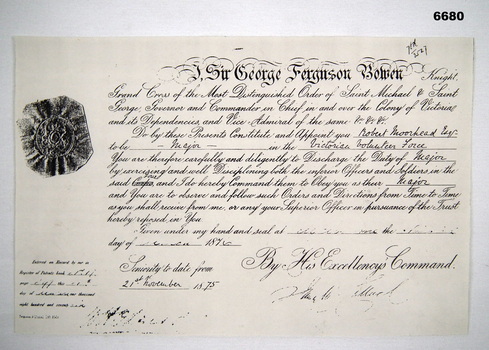Historical information
Promotion to MAJOR of ROBERT MOORHEAD Esq of the Victorian Volunteer Force. Dated March 1876
Physical description
Legal Document - cream coloured paper with black print and seal.
Inscriptions & markings
"I Sir George Ferguson Bowen Knight Grand Cross of the Most Distinguished Order of Saint Michael & Saint George Governor and Commander in Chief in and over the Colony of Victoria and It's Dependencies, and Vice Admiral of the same. Do by these Presents Constitute and Appoint you ROBERT MOORHEAD Esq to be MAJOR in the Victorian Volunteer Force............

